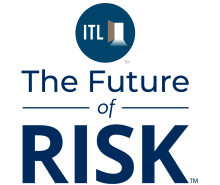The insurance industry has traditionally followed an actuarial model of valuation to assess, rate, and price the risks it insures. This process involves analyzing data related to variables that represent the risk attributes of an individual or property to predict the likelihood of a risk event occurring within the policy period.
However, the behavior of the insured—such as lifestyle habits, driving patterns, or how well someone maintains the safety of their home—has historically not been directly included in these calculations. Despite being significant causal factors in risk events, these behavioral aspects could not be incorporated due to the lack of appropriate technologies to source and analyze such data. Instead, insurers relied on retrospective analysis of risk events to identify parameters that could serve as reliable proxy predictors of behavior.
Over the past decade, several new technologies have emerged, triggering a data and information revolution that has enabled the insurance industry to source real-time risk data, including data related to customer behavior. Access to real-time behavioral data has led to a paradigm shift in how the insurance industry evaluates risk. The transition into a new era of behavioral insurance has just begun. These technologies are maturing, and the concept of monitoring behavior is gradually gaining market acceptance. Insurers are now experimenting with behavioral insurance products that integrate insights from real-time data, offering behavior-based adjustments to traditional actuarial valuations.
See also: Precision Underwriting Transforms Risk Assessment
Insurance, as we know it
Insurance is a contract that transfers risk from an individual to an insurance company in exchange for the payment of a premium. To quantify risk and calculate the premium amount, the insurance industry employs actuarial valuation, a method based on mathematical probability calculations. Insurers assess various variables—known as rating factors—related to personal, demographic, or asset characteristics, as well as transaction history, usage patterns, and claims history. These factors are used to create a risk snapshot at the start of the policy period. Using this snapshot, insurers aim to predict the distribution of risk throughout the duration of the contract.
Rating factors enable insurers to quantify risk more effectively by transforming unmanageable risks into manageable ones. For any given rating factor, good risks within a group (comprising individuals who share the same rating factor) offset the bad ones, and the actual loss of an individual is replaced by the average loss of the group. Insurers use multiple rating factors, ensuring that cross-subsidization occurs only after normalizing for other risk variables. However, the issue of cross-subsidization persists. As long as all possible rating factors have been identified or normalized, as the size of the risk factor group increases, the standard deviation of the group’s average loss approaches zero. This, in turn, enhances the accuracy of predictions about future outcomes.
However, if not all possible rating factors have been identified, we revert to a relative position. In such cases, the premium rate for any customer is based on the average risk across the insurer’s portfolio or class of business (the risk pool), adjusted for bonus-malus factors (relativities derived from the risk factors). The resulting premium is considered actuarially fair, as the individual is charged a premium commensurate with the expected claims under the policy. More sophisticated insurers may target profit and share of reinsurance costs as a function of claim volatility rather than average claims. In such scenarios, rating factors are regressed against claim volatility, but the underlying principle remains similar.
While actuarial valuation aims to statistically predict claim frequency, it has traditionally not accounted for risk behaviors that contribute to losses. Due to a lack of appropriate technologies and methods, insurers have historically been unable to monitor behaviors that directly influence risk and incorporate them into the initial risk snapshot. Behavioral assessment represented a soft underbelly of risk management, as it was inherently subjective and a continuous factor throughout the entire policy period. For insurers, information asymmetry remained a significant challenge, as they often had insufficient data about the insured individual or property to make accurate decisions. There are two types of asymmetric information: one related to hidden risk factors and the other related to risk actions.
In insurance, information asymmetry poses a significant challenge. It arises from the fact that insurers often lack sufficient knowledge about the insured individual or property to make accurate decisions. Information asymmetry related to hidden risk factors occurs when one party to the contract possesses knowledge about themselves that the other party does not. This leads to adverse selection, where higher-than-average risks are more likely to seek and obtain insurance coverage at standard or average rates. Insurers can mitigate this risk by analyzing more data from diverse sources or reactively by voiding the contract or imposing restrictive clauses if the deliberate suppression of material information is discovered later. Conversely, information asymmetry related to actions occurs when one party to the contract alters its behavior to the detriment of the other party. For example, if the insured fails to follow best practices for risk prevention or mitigation, the likelihood and severity of the risk increase. While the former type of asymmetry undermines insurers’ ability to accurately assess the risk of loss, the latter exacerbates it.
As behavior is an important constituent of information asymmetry, insurers depend either on disclosures made by customers or obtain information from other institutions and regulated bodies. Another way to uncover the mystery of behavior is to conduct a retrospective analysis of risk events to find data associations that could be treated as correlations and proxies for risky behavior. With the help of proxies, insurers have traditionally created generic a priori behavioral risk snapshots, such as assuming that young people are bad drivers or that highly educated professionals tend to be good drivers.
Forces influencing the change
In the last few decades, conventional insurance practices such as the law of large numbers, rating factor normalization, and premium cross-subsidization have been challenged by three forces: traditional rating factors being seen as discriminatory, the changing preferences of new demographic generations, and emergent technologies.
Perceived Discrimination: Over the years, some rating factors—both causal and correlative—have started being considered spurious, illegal, or unfair. With many countries enacting anti-discrimination legislation, the insurance industry started invoking the principle of actuarial fairness to legitimize its actuarial valuation methods and risk selection practices. The industry drew a distinction between fair and unfair forms of discrimination and insisted that fair discrimination is necessary to differentiate between good and bad risks and to avoid adverse selection. The industry’s rallying point has been that the core principle of actuarial fairness would be endangered if the sector was not granted exclusive exemptions from such equity legislation. Despite this, some rating factors have been called out for having a discriminatory effect against specific social groups, resulting in their usage being restricted. This has weakened insurers' ability to infer what was happening within the behavioral black box.
Changing Preferences of New Customers: Customers from the new generations have a different view on risk and premium cross-subsidization. They prefer the personalization of insurance coverage and services and intend to pay only for the exact risk they represent, rather than cross-subsidizing the higher risk of other customers. Customers who exhibit prudence and sound judgement in their behavior want their good actions to be acknowledged and rewarded by the insurance company in the form of appropriate premium discounts. They are keen to avoid paying for the imprudence of other customers.
Emergent Technologies: Data-driven technologies such as telematics, wearable health trackers, home sensors, smartphone sensors, big data, and predictive modelling are now allowing insurers to obtain even more granular and nuanced behavioral data, enabling them to determine actual causal risk factors and the costs of covering the risks with greater accuracy. New customers also support the concept of continuously sharing their behavioral data in exchange for rewards that recognize their acts of prudence and sound judgment.
The ability to track at-source risk data and customer behavior in real time removes the veil of information asymmetry and effectively transforms risk management in the insurance industry. Insurers can now distil clear insights into the dynamic behavioral elements, allowing them to sketch and continuously refine the causal behavioral graph throughout the contract period. The concept of insurance is shifting from hindsight-based risk profiling to foresight-based risk assessment. This introduces a new narrative for insurance, moving away from a valuation modelled on behavioral proxies to one based on causal behavioral values. As a result, primary driver parents who let their younger children drive their car can no longer hide behind traditional rating factors.
See also: The Cognitive Biases Hurting Risk Management
The new paradigm
Behavioral insurance is characterized by insurance products that incorporate approaches for continuously tracking risk data and making behavioral interventions based on risk insights. It leads to the charging of tailor-made, personalized premiums based on monitoring the customer's behavior. By pinning the responsibility for some hazards and risks directly on the insured, behavioral insurance creates a new narrative for the industry. Behavioral insurance is in its early stages of growth and adoption, and the insurance industry is beginning to pivot towards a new approach. To start, the industry is experimenting with monitoring some well-established behavioral variables that are causative of risk but previously could not be measured earlier. Currently, the popularity of behavioral insurance is more in motor, followed by life and health, and relatively less in home insurance. The behavioral variables monitored range from to good driving-related parameters in auto insurance, healthy lifestyle activities in life and health insurance, and proper home maintenance in home insurance.
In life and health insurance, lifestyle behaviors such as exercising, food habits, and periodic health checks are monitored to promote healthy living. In auto insurance, in addition to conventional risk parameters, various aspects of driving behavior are tracked. These include vehicle speed to assess speeding events and compliance with speed limits, acceleration and braking patterns to detect aggressive driving behaviors such as rapid acceleration or harsh braking, as well as unsafe cornering and sharp turns. Monitoring behavioral data helps insurers identify key causal predictors of risk and intervene to encourage rightful behavior. Behavioral interventions take the form of rewards, such as premium discounts and coupons for redemption, or punitive actions, such as rate hikes and penalties.
From a risk pricing perspective, insurers are yet to explore the integration of causal behavioral data into their core risk valuation models. Conventional actuarial valuation of risk still dominates the core. Rate-making is still based on traditional variables that are either independent of behavior or account for conventional proxies. Currently, behavior valuation functions as a wrapper around the values calculated through actuarial valuation and fairness. Behavioral data is converted into a behavior score, whose impact on risk is defined in quantitative terms. These bonus-malus charges are applied to the actuarial premium depending on the behavior score.
Existing insurance contracts are predominantly rigid and inflexible. Once fixed, premiums are either changed at the beginning of a new contract period in short-term contracts or remain unchanged in long-term contracts. Behavioral insurance is attempting to change this paradigm by introducing interim and periodic checkpoints in long-term contracts to review behavior for potential revisions to the premium and/or policy conditions. In the case of short-term contracts, even bad behavior that does not cause a risk event or result in a loss, as well as non-adherence to healthy behavioral protocols, is penalized due to the probable increase in risk profile. By tracking behavioral variations, insurers can capture incidents of morale hazard and prevent claim leakages by denying compensation for claims caused by imprudent behavior. Behavioral insurance promises to reduce risk through new processes, most of which are automated with the help of data and algorithms designed to steer individual behavior in the direction of maximum profitability.
Behavior valuation is seen as a solution to address the challenges posed by perceived discrimination in the use of certain predictor variables within the actuarial valuation method. The behavior of an individual, despite all other influencing factors, is presumed to be a conscious choice made by the individual and therefore controllable. This hypothesis posits that rather than being typecast based on a vague generalization, individuals are fully responsible for the type of risk category they represent. Hence, behavior valuation based on behavioral variables is perceived as fair and is not considered discriminatory, as it is based neither on proxies nor on statistical generalizations. Measuring behavioral data and assessing behavioral interventions help insurers organically distinguish prudent customers from imprudent ones.
Challenges to overcome
There are lower-hanging fruits in the rating factor universe that insurers may want to consider before turning to behavioral factors. For example, detailed flood hazard mapping has had a greater impact than behavioral pricing over the last five to 10 years, and gene microarrays are expected to have a much greater impact over the next 10 to 20 years than the differential between one’s "vitality age" and actual age ever will. That said, every little piece of information helps, so there is still room for behavioral pricing, but we also need to consider other challenges.
The cost of collecting and processing real-time behavioral data is still relatively high compared with the potential reduction in cross-subsidization. Hence, the premium savings offered by insurers have been marginal. This, in turn, influences customers' willingness to change their behavior, which reduces with the offered premium savings. For instance, avoiding driving because it is raining may reduce claims, but the payoff may not be significant enough to justify the inconvenience. In comparison, consumers can obtain greater behavioral and financial payoffs elsewhere—for example, by using their washing machine at night due to smart meter-based electricity pricing.
The prospect of having granular risk data could improve risk prediction, thus enabling risk pricing that is more closely commensurate with the expected risk. The development of behavioral-based rates can be seen as a shift toward personalization. Behavioral-based personalization may result in greater premium variability or instability for customers, potentially reducing the appeal of insurance. Adding further complexity and uncertainty to a product that is already complex and primarily sold on the basis of certainty may not be such a great idea.
The monitoring of behavior invariably leads to the possibility of behavioral steering for the betterment of the risk profile. Conventional triggers for behavioral steering are explicit rewards or punishments. Over the years, the subject of behavioral economics and the subtle art of behavioral nudging have gained mainstream adoption. Insurers should be aware that any practice of data-driven design to manipulate behavior is unethical. They must adopt a cautious and well-thought-through approach in developing behavioral-based insurance models. They should always remember that the customer’s consent to share personal data is not an acceptance of being deceived or a justification for being placed in a panopticon.
Paradoxically, behavioral monitoring may provide insurance companies with more information than even the customers themselves may know. It may not only reveal what the customer consciously hides (suppression or misrepresentation) but also what the customer is not even aware of.
In the context of the Johari Window, a visual representation created by psychologists Joseph Luft and Harrington Ingham, the former falls in the hidden area (known to the self but unknown to others), while the latter falls in the blind area (unknown to the self but known to others). While insurers have the legal right to protect their interests by acting on the hidden area findings, it could become a legal and ethical challenge to penalize customers based on blind area findings that they are unaware of themselves. Insurers must follow the principle of utmost good faith to work on expanding the size of the open area. Before they initiate any punitive or curative actions based on those findings, insurers must openly disclose both the hidden and blind area findings and the consequent actions to the customers. Insurers should establish standards regarding the behavioral variables that are monitored and measured, how they are processed, the insights derived, and the consequent action pathways.
Given the continuous flow of behavioral data and the need for real-time processing, analysis of the data is only possible through automated decision-making systems. These systems can identify non-linear patterns within causal behavior to classify it as good or bad. It is well known that big data significantly influences causality analysis, making proxy and spurious correlations appear more authentic. This can engineer discrimination based on new behavioral proxy traits that are hard to detect. While this may or may not act against specific social groups, it would still be considered a bad faith practice. It must be borne in mind that the primary purpose of behavioral insurance is to remove proxies and replace them with causative variables while monitoring how risk progresses during the contract period. The subjective nature of behavior should not lead to the creation of a new black box—one that is even darker and system-generated.
The advent of behavioral insurance has raised concerns about the future role of insurance. Unlike traditional insurance, where information asymmetry drives the risk of adverse selection, behavioral insurance could usher in a new era of favorable or propitious selection. This could occur either because individuals with risky behaviors opt out of insurance or because insurers choose not to cover them. As a result, insurance becomes an unforgiving instrument, accessible only to favorable risk pools. This favoritism could, in turn, lead to a reduced need for insurance. An important factor that sustains the demand for insurance is the inherent unpredictability of human behavior and the range of risks it can trigger. If individuals’ behaviors are uniformly conditioned into an optimal state through behavior-steering, the scope of insurance may diminish. Ultimately, the need for insurance could be restricted to fortuitous losses, such as those associated with mortality or morbidity (life and health) or natural catastrophes (auto and home).
Toward a new era
The spread of behavioral insurance is still in its early stages, primarily driven by wellness-based models in life insurance, telematics-driven usage-based insurance, manage-how-you-drive models in auto insurance, and sensor-based home insurance. Behavioral insurance offers several key advantages. First, it encourages the insured to adopt healthier practices, thereby reducing the frequency and severity of preventable risks. Second, behavior-steering fosters continuous engagement between insurers and policyholders, shifting the narrative of insurance from a low-touch to a high-touch model. Third, real-time behavior tracking helps mitigate moral hazard and adverse selection, reducing instances of insurance fraud. Finally, behavioral data enables insurers to build healthier risk pools and refine risk management strategies.
The foundation of behavioral insurance relies on customers sharing their personal data, making data privacy a critical concern. The core tenet of data privacy is an individual’s right to determine when, how, to what extent, with whom, and for what purpose their data is shared. Behavior monitoring involves multiple technology players across the data value chain, each contributing to data collection, processing, and analysis. Ensuring data privacy is a collective responsibility that requires robust legislation, governance structures, and regulatory oversight.
As behavioral insurance matures, core risk valuation will integrate both conventional statistical data and real-time behavioral insights. Currently used behavioral proxies will be replaced by truly causative variables, leading to greater accuracy. In traditional models, a customer’s transition between statistical risk segments is gradual and structured. In contrast, behavioral traits are highly dynamic, introducing greater volatility in risk segmentation. Consequently, a customer’s risk profile at any given time becomes a complex interplay of actuarial and behavioral risk scores, necessitating a more adaptive risk assessment approach.
In the future, behavioral insurance could expand to incorporate a broader set of behavior rating factors, behavioral patterns, and complex interactions with conventional risk variables to better establish causal associations. Additionally, longitudinal analysis will enable insurers to determine optimal feedback and reward mechanisms that effectively guide behavior in the desired direction. This evolution will lead to comprehensive behavioral response models, complementing the existing proactive approaches. The insured's responsiveness to preventive alerts and action reminders could emerge as a key causative behavioral predictor of risk. Repeated inaction or inappropriate responses to actionable alerts may be classified as high-risk behavior, influencing risk assessment and pricing.
That said, behavioral insurance could still fall by the wayside, overwhelmed by the many challenges it faces. Even if it manages to overcome them, it may do so too late. It’s not far-fetched to imagine a future where insurance premiums are driven less by individual behavior and more by unpredictable, chaotic—even apocalyptic—weather events. At that point, it won’t matter whether you did your star jumps this morning or diligently monitored visitor arrivals through your Google Nest doorbell—especially when a tropical cyclone is pounding on your door, despite the fact you don’t even live in the tropics!
Reference
Barry, L., & Charpentier, A. (2020). Personalization as a promise: Can Big Data change the practice of insurance? Big Data & Society, 7(1), 205395172093514. https://doi.org/10.1177/2053951720935143
Cevolini, A., & Esposito, E. (2020). From pool to profile: Social consequences of algorithmic prediction in insurance. Big Data & Society, 7(2), 205395172093922. https://doi.org/10.1177/2053951720939228
Jeanningros, H., & McFall, L. (2020). The value of sharing: Branding and behaviour in a life and health insurance company. Big Data & Society, 7(2), 205395172095035. https://doi.org/10.1177/2053951720950350
McFall, L., Meyers, G., & Hoyweghen, I. V. (2020). Editorial: The personalisation of insurance: Data, behaviour and innovation. Big Data & Society, 7(2), 205395172097370. https://doi.org/10.1177/2053951720973707
Meyers, G., & Van Hoyweghen, I. (2017). Enacting Actuarial Fairness in Insurance: From Fair Discrimination to Behaviour-based Fairness. Science as Culture, 27(4), 413–438. https://doi.org/10.1080/09505431.2017.1398223
Minty, D. (2020, May 13). Are loss prevention initiatives just trojan horses for data harvesting? Ethics and Insurance. https://www.ethicsandinsurance.info/loss-prevention/
Minty, D. (2020, April 29). Behavioural fairness is a serious risk to the future of insurance. Ethics and Insurance. https://www.ethicsandinsurance.info/behavioural-fairness/
Tanninen, M., Lehtonen, T., & Ruckenstein, M. (2022). Trouble with autonomy in behavioural insurance. The British Journal of Sociology, 73(4), 786–798. https://doi.org/10.1111/1468-4446.12960








